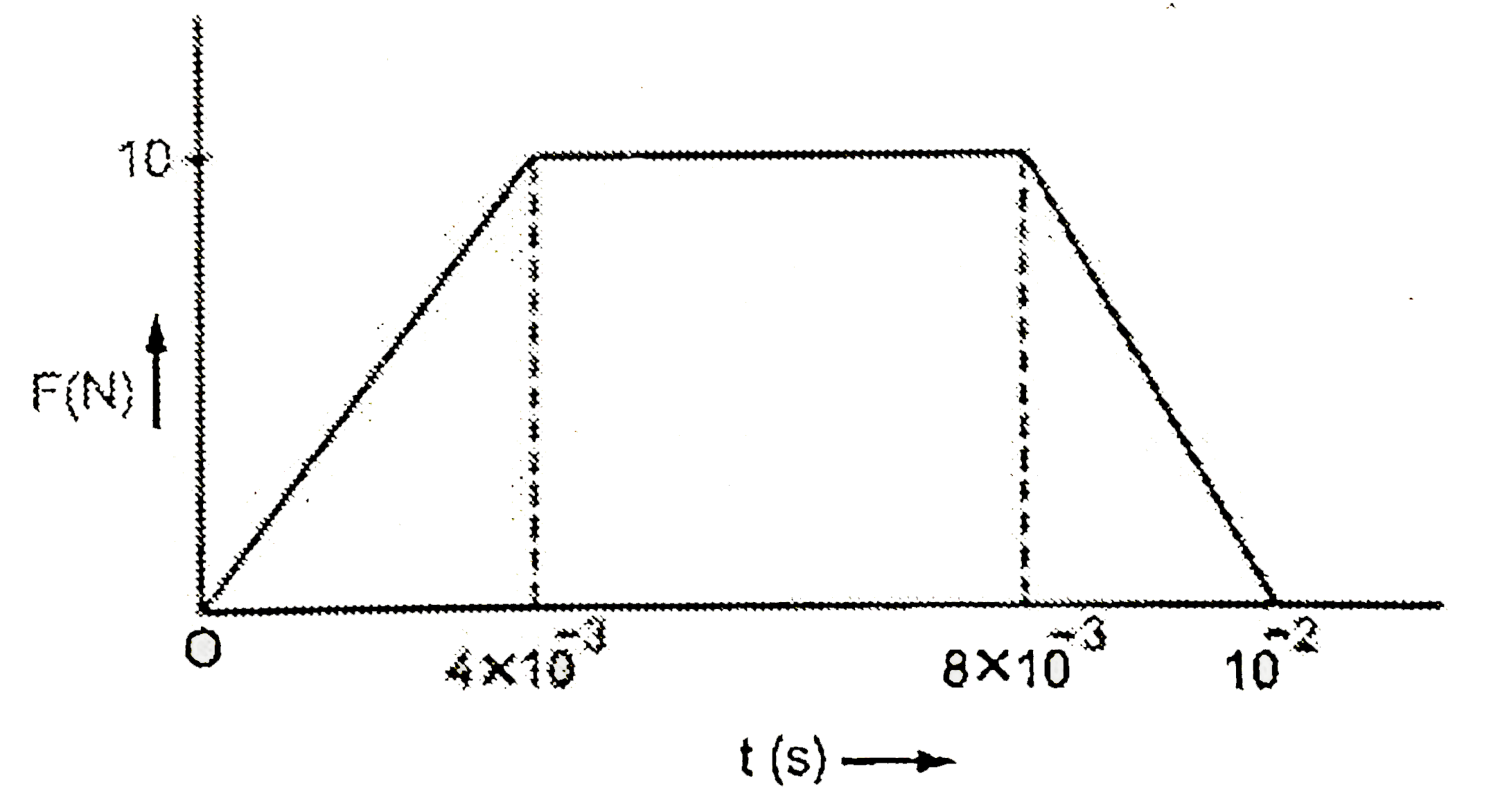A particle of mass moving with a velocity of is acted upon by a force which changes its direction of motion by an angle of without changing its speed. What is the magnitude of impulse experienced by the particle?
The correct Answer is:D
or

Topper's Solved these Questions
- CENTRE OF MASSBOOK - CENGAGE PHYSICSCHAPTER - CENTRE OF MASSEXERCISE - Multiple Correct
25 Videos
- CENTRE OF MASSBOOK - CENGAGE PHYSICSCHAPTER - CENTRE OF MASSEXERCISE - Assertion - Reasoning
2 Videos
- CENTRE OF MASSBOOK - CENGAGE PHYSICSCHAPTER - CENTRE OF MASSEXERCISE - Subjective
23 Videos
- CALORIMETRYBOOK - CENGAGE PHYSICSCHAPTER - CALORIMETRYEXERCISE - Solved Example
13 Videos
- DIMENSIONS & MEASUREMENTBOOK - CENGAGE PHYSICSCHAPTER - DIMENSIONS & MEASUREMENTEXERCISE - Integer
2 Videos
Similar Questions
A particle of mass 1kg is moving with a velocity of 200 m/s. An impulsive force of 4 s duration acts on the particle in a direction opposite to its motion. The force fluctuates a little bit around 40 N magnitude and then it dies out in next 4s showing small fluctuations. An oscilloscope records the force as shown. The two oscillating components in the graph are identical except that one is mirror image of the other. Find the magnitude of velocity of particle after the force stops acting.

View SolutionA particle is moving with velocity 5 m/s towards cast and its velocity changes to 5 m/s north in 10 s, find the acceleration .
View Solution
Knowledge Check
A particle moving with a speed v changes direction by an angle θ, without change in speed.
AThe change in the magnitude of its velocity is zeroBThe change in the magnitude of its velocity is 2vsin(θ/2)CThe magnitude of the change in its velocity is 2vsin(θ/2)DThe magnitude of the change in its velocity is v(1−cosθ)A particle moving with velocity V changes its direction of motion by an angle θ without change in speed. Which of the following Statement is not correct?
AThe magnitude of the change in its velocity is 2V sin(θ2).BThe change in the magnitude of its velocity is zero.CThe change in its velocity makes an angle π2+θ2 with its initial direction of motion.DThe change in velocity is equal to the negative of the resultant of the initial and final velocities.A particle of mas 70g, moving at 50cm/sis acted upon by a variable force opposite to its direction of motion. The force F is shown as a function of time t.
 AIts speed will be 50cm/s after the force stops actingBIts direction of motion will reverseCIts average acceleration will be 1m/s2 during the interval in which the force actsDIts average acceleration will be 10m/s2 during the interval in which the force acts.
AIts speed will be 50cm/s after the force stops actingBIts direction of motion will reverseCIts average acceleration will be 1m/s2 during the interval in which the force actsDIts average acceleration will be 10m/s2 during the interval in which the force acts.
A block of mass m at rest is acted upon by a force F for a time t. The kinetic energy of block after time t is
View SolutionA particle is moving with velocity 5 m/s towards cast and its velocity changes to 5 m/s north in 10 s, find the acceleration .
View SolutionA particle of mass m at rest is acted upon by a force P for a time t. Its kinetic energy after an interval t is
View SolutionA particle of mass m at rest is acted upon by a force P for a time t. Its kinetic energy after an interval t is
View SolutionA block of mass m at rest is acted upon by a force F for a time t. The kinetic energy of block after time t is
View Solution
